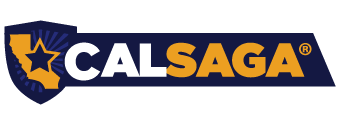Financial Technology: The Hidden Workforce Retention Tool
Jacob Olins, TEAM Software by WorkWave, CALSAGA Network Partner
As leaders in the security industry, you’re well aware about how difficult the labor market can be and how employee churn can impact your bottom line. Finding qualified candidates, conducting background checks and training new staff consume significant resources and time, all while your current staff struggles to keep SLA’s managed. That’s why it’s more important than ever to lead with a retention-first approach across various aspects of your business.
This is where financial technology can serve as an interesting retention tool for your business. Beyond simply processing payments, modern financial systems can directly address employee needs and operational pain points that affect how people experience your company day to day.
Employee-Focused Financial Solutions
The benefits of financial technologies aren’t siloed in accounting departments. HR professionals increasingly recognize its value for employee retention and workplace efficiency.
Access to earned wages has emerged as a particularly effective retention tool. According to our partner research, two-thirds of employers state that earned wage access makes the greatest day-to-day impact on their employees, outranking other financial wellness benefits. That’s because this benefit offers a flexible solution to a fundamental need: control over when employees can access money they’ve already earned.
The traditional two-week pay cycle doesn’t align with how many employees manage their finances. Bills, rent and unexpected expenses rarely wait for payday. By offering more flexible access to earned wages, you acknowledge this reality and provide a valuable solution that builds loyalty in ways that conventional benefits often miss.
These numbers matter for your retention strategy. When employees can access their pay when they need it, they gain a benefit that addresses real-life financial needs. This practical support creates a compelling reason to stay with your company. Our partner even reports improvements in employee retention as high as 36%.
Operational Efficiency Through Financial Technology
While it’s important to recognize the opportunities for fintech across your departments, including HR, it’s also important to redouble your efforts in implementing fintech as a value-add in your financial departments. Take the earned wage access example above. It’s important to note that with the right provider, this type of employee benefit should not add any additional burden to your existing payroll processes and teams. Remember, the goal is to make their jobs easier, not harder. The same methodology can be applied to other business functions.
Think of this: On average, it might take your team 10-15 minutes to process a single invoice. While seemingly small, this type of administrative overhead can multiply quickly across an organization. An employee handling hundreds of invoices a month could dedicate entire days to completing these tasks. This challenge becomes even more significant when trying to properly allocate those invoices and individual line items to the correct jobs—a critical aspect of maintaining accurate job costing that directly impacts profitability tracking.
The time saved from automating routine financial processes is substantial. Organizations using automated financial solutions report their teams spend 70% less time processing invoices. This creates opportunities to redirect those working hours to higher-priority tasks.
Automated reconciliation reduces month-end workloads while improving accuracy. Electronic payments reduce paper processing time while costing less than traditional check systems. By automating AP processes, you also streamline job costing, enabling your team to easily track which materials and services belong to which jobs without the tedious manual work. Each improvement frees up time that benefits both your organization and individual employees.
Time spent on manual financial tasks has a hidden cost: workplace satisfaction. When employees spend excessive time on repetitive financial processes, it creates a particular kind of frustration. This frustration often leads to disengagement and eventually turnover. By reducing this source of friction, financial automation directly supports your retention goals.
Building a Comprehensive Approach
The connection between financial systems and employee retention is clear. When you provide flexible access to earnings, you address practical employee needs. When you reduce time spent on routine financial tasks, you create a more efficient workplace. Both approaches directly contribute to employee retention where it matters most. Start by examining what financial flexibility options might address specific needs in your workforce. Then consider where your financial processes consume disproportionate time and could be streamlined.
Every retention advantage matters. Financial technology provides a practical, measurable way to differentiate your organization and address real employee needs. The result is a more stable, efficient and engaged workforce.
If you’re looking to learn more about fintech-driven operations, check out this fintech blueprint guide.
 Jacob Olins is the SVP & GM of Fintech at WorkWave, where he oversees all aspects of WorkWave Fintech. Olins joined WorkWave in 2023 with over a decade of experience working in financial services & technology, specializing in embedded finance & payments. Prior to WorkWave, Olins held leadership positions at Epos Now, JP Morgan Chase, Verifone, Inc., and Citibank.
Jacob Olins is the SVP & GM of Fintech at WorkWave, where he oversees all aspects of WorkWave Fintech. Olins joined WorkWave in 2023 with over a decade of experience working in financial services & technology, specializing in embedded finance & payments. Prior to WorkWave, Olins held leadership positions at Epos Now, JP Morgan Chase, Verifone, Inc., and Citibank.
